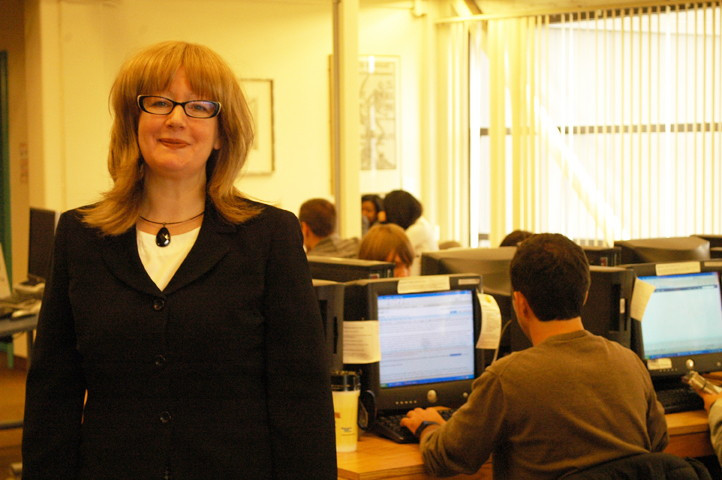New librarian taking the books to where students live and work — and walk
New technology means students no longer confined to the stacks
Libraries are changing faster than you can Google “e-book,” and the University of Winnipeg library is trying to keep up. Some school libraries have sold off their print collections in favour of online-libraries. The U of W library isn’t there yet, but new library dean Jane Duffy plans to shake up how students hit the books.
“For every young person that comes into the University of Winnipeg library, and this is a conservative estimate, there are 10 more that aren’t there. They are at home or in their dorm room or at their part-time job ... and they are using library materials as well,” said Duffy, who joined the university in time for the beginning of the current school year.
Duffy sees the physical space of the library as an archaic view of a library’s jurisdiction. Online information is the way of the future and the library’s domain is growing to encompass it.
Duffy sees the new library website at the centre of the library, with its new design and user-oriented interface. The website, a project led by Michael Hohner, allows users to interact with library material on their own terms, using keywords and simple functions, instead of relying on technological jargon.
Duffy is also pushing podcasting. She sees portable audio information as a way for students to learn and use the library in a way that isn’t restricted by the physical space of the library or the hours of operation.
“We [at the U of W Library] are very concerned about signs and comfort of seating and ease of use, physically, but we have to think in those exact same terms, even more so, in the web environment,” she said.
Students might think their iPhone or BlackBerry should be switched off in the library, but Duffy thinks the opposite. She sees this new kind of technology as an innovative way of accessing information.
“We need to make those [digital] materials as accessible, as logical, as easy to navigate as if users were in the library,” said Duffy. “It’s finding the user where the user is and helping to allow the user to get to what she or he needs without having to jump through a whole bunch of hoops.”
Linwood DeLong, the U of W collections librarian and long-time librarian at the U of W, sees the future of libraries in collaboration between institutions. The nature of digital information is that it’s hard to keep track of online and lots of information gets lost in the cyber-mix.
Malcolm McPherson, a fourth-year English student at the U of W, agrees.
“We take virtual data for granted. It can be very fragile. It is a huge gamble to use virtual information,” he said. “You always wonder why some articles have full online access – who is the power behind that? People have an interest in having things published.”
DeLong said the challenge often lies with publishers who sell online access to information as packages, “like cable TV.”
Published in Volume 64, Number 14 of The Uniter (December 3, 2009)







